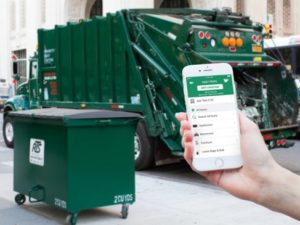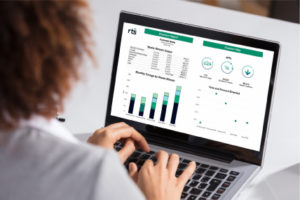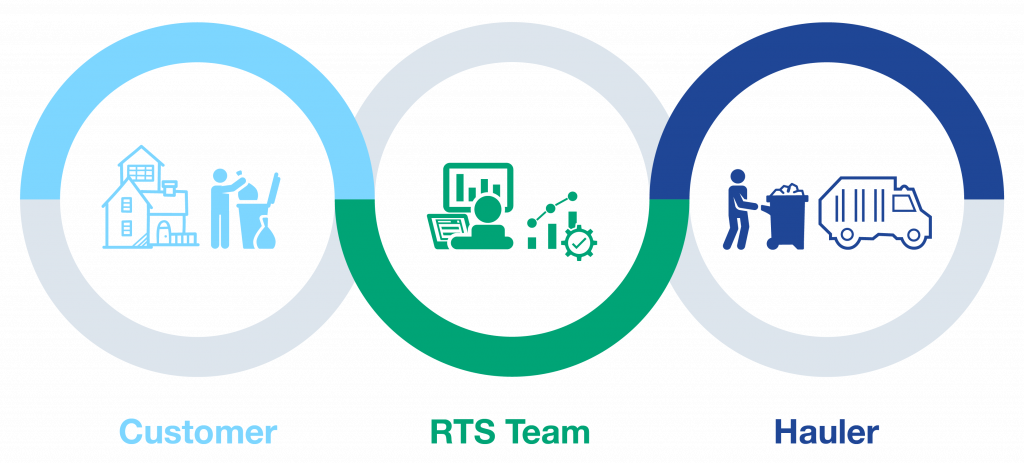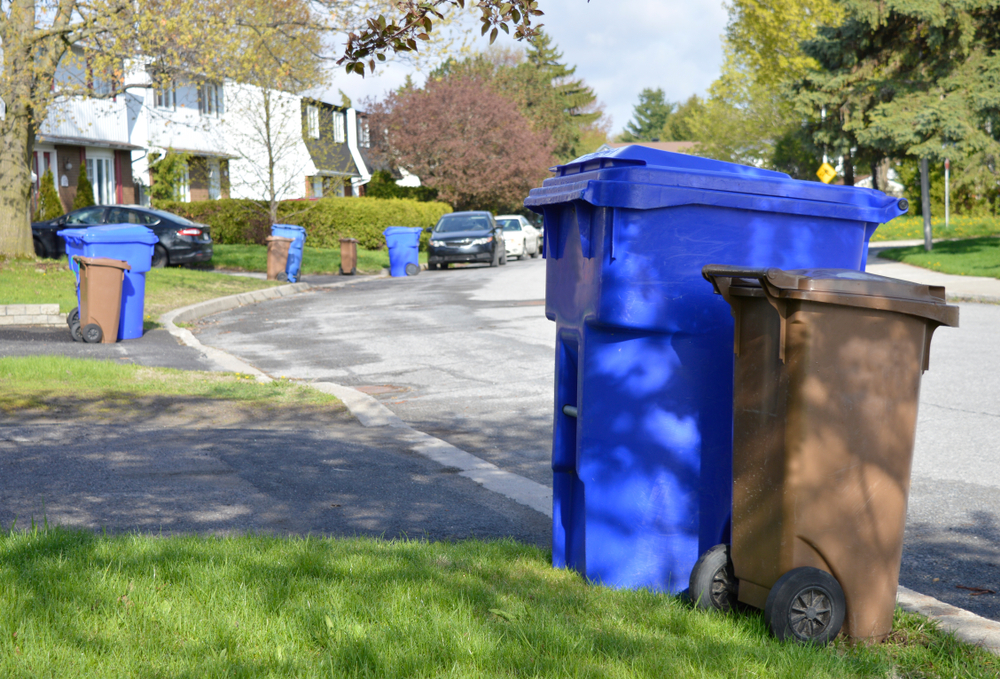Residents across America know that the way their towns and cities handle municipal waste and recycling needs to change.
Americans generate more waste per person than any population on Earth, and US solid waste generation continues to grow year-on-year. Meanwhile, US cities are growing and becoming denser, and international political developments are making it much more difficult for local governments to recycle. Against this backdrop, many municipalities are struggling to cope with the logistical and environmental challenges of managing waste flows responsibly.
To put it bluntly, even as technology and big thinking continue to revolutionize other industries, municipal collection, recovery, and dumping practices very much remain stuck in the last century. We can do better.
To be fair, challenges related to municipal recycling and waste are complex, particularly at large scales. Growing piles of trash and recycling are just the beginning. As consumer goods become more available and more intricate, the large and growing range of materials that end up in that pile compounds these challenges. And since waste ranges from typical household refuse to commercial trash and recycling to construction, bulk, and yard waste, there can never be a simple one-size-fits-all approach. Vastly divergent topographies and population profiles also make standardization difficult.
To learn more about the current national waste and recycling figures, click here.
Add to this existing inefficiencies in collection and distribution, multiple service providers that either do not or are unable to communicate with one another, and a lack of public education on how to manage waste properly, and it’s no wonder that it can be difficult for some municipalities to envision more efficient solutions. So how can we approach these challenges in the modern spirit of innovation?
Using technology, we can track many points in complex waste streams, and generate analytics that provide previously hidden insights into operational inefficiencies and climate impacts. There are four main avenues through which towns and cities, in partnership with haulers, can do this: planning, tech-driven operations, analytics and support.
![]()
Planning – Facilities, Equipment and Education
When it comes to municipal waste, individuals can make a significant difference in both their homes and their places of business. However, achieving success depends largely on towns and cities ensuring access to the right kind of equipment and facilities and imparting proper guidance on how to use those facilities. Whether it’s specialized bins provided at optimized disposal points or convenient access to cutting-edge recycling facilities, planning with tech in mind can help encourage proper disposal and sorting of most materials.

As towns and cities are looking to improve recycling infrastructure, the more ubiquitous, efficient and specialized that Material Recovery Facilities (MRFs) become, the easier it will be to ensure that unpredictable recycling commodities price swings don’t derail hard-fought efforts. Technology that enables a data-driven approach can provide municipalities with operational analytics that can truly change how waste is handled.
Sustainability education should also be a priority; however, since the consumer, waste, and recycling industries are in constant flux, keeping information up-to-date is a challenge. Today, in-person or virtual training sessions can easily replace static information leaflets or circulars and interactive apps can replace information silos on websites that are very quickly rendered out-of-date. Additionally, tech innovations such as smart bins can make life easier for both consumers and businesses, mitigating problems associated with properly sorting waste both at the source and after collection.
![]()
Tech-Driven Solutions – Collection and Distribution
Municipalities looking to maximize recycle rates and avoid causing environmental damage still face challenges with proper collection and depositing of waste and recyclables. Often, municipal waste and recycling pickup routes are not designed efficiently, meaning trucks can be out on the roads all day, every day. This is time-consuming, inefficient, and leads to a sizable carbon footprint by the waste management industry when summed across material streams and the entire country. Additionally, ensuring that specific materials end up at the correct recovery facilities requires significant planning, design, and strategy. Improper deposits can contaminate waste streams, which sometimes means that products intended for recycling end up in landfills.
Tech solutions providers are now connecting residential and commercial customers to their haulers, paving the way for services like on-demand collection that allow municipalities to offer services that adapt responsively to changing demands.

On-demand collection allows businesses and residents to quickly and easily arrange pickups of non-standard waste items, or of items that rarely or periodically require regular collection such as e-waste or furniture. Regular and on-demand pickups and collections can be easily arranged and confirmed on smartphones or by email, with digitally connected haulers available on short notice.
Distribution of waste and recyclables to the correct facilities can also be improved through intelligent tracking systems and optimized routes. Food waste, for instance, can be tracked to either donation or composting facilities, with drop-off confirmations provided to ensure that sustainability metrics are met. Finally, by connecting haulers directly to businesses and consumers, transparency is increased, ensuring that everyone is on the same page when it comes to effective recycling.
![]()
Analytics – Monitoring and Evaluation
Looking ahead to the future of municipal recycling and waste management, the close monitoring and evaluation of waste streams will be a crucial tool for diverting material away from landfills. To encourage greater responsibility at all stages of the waste management process, waste diversion metrics can provide detailed insights into existing habits, with custom waste disposal services adapting to changing requirements. When tied to a system that prioritizes education and tracks collection and drop offs, these metrics can be used to evaluate how waste is generated, leading to a virtuous cycle of continuous improvement for recycling operations.

Municipalities looking to cut costs and raise efficiency in waste management operations can also use detailed waste metrics to promote sustainability programs. Here again, we come full circle, with information and data that is drawn from the end of the cycle being used to educate and raise awareness of better waste management practices in both the residential and commercial sectors.
![]()
Support – Haulers and Customers
Finally, because recycling and trash is a complex business and most residents and business owners are not experts, people need services they can rely on. We can incentivize people to change behavior, but the cycle is only complete if we also incentivize hauler reliability and operational efficiency. Most haulers simply cannot reply to all customer concerns or questions, so platformsthat connect customers to the services they provide using tech can help eliminate communication errors or redundancies and ensure that consumers are properly educated.
At the same time, haulers require technical and service support. Many companies and workers run trucks for more than 12 hours per day and are rightly focused on ensuring timely and comprehensive pickups. They simply do not have the means to field queries on sustainability or waste stream separation practices, to say nothing of diversion metrics. Moreover, they may not have the tools to optimize their routes, which would save time and reduce vehicle emissions. High-touch service underpinned by technology can fill these gaps, thereby providing value to both customers and to the women and men who tirelessly move our waste from source to destination.

The waste and recycling industry is complex and more transparency will be key to productive and sustainable solutions. Tech, while not a panacea, can move us a long way toward solving the environmental and logistical issues that our cities and states face today. Ultimately, these solutions will help cities and states meet their ambitious goals as they continue to take the lead on environmental stewardship and innovation.

About The Author
David Segall is the VP of Policy and Municipalities for RTS, where he helps municipalities bridge their evolving sustainability and service needs with innovative waste and recycling solutions. He is also an adjunct professor at NYU’s Stern School of Business and at NYU’s Graduate Program in International Relations, where he teaches undergraduate courses on supply chain responsibility and graduate courses on political psychology.

